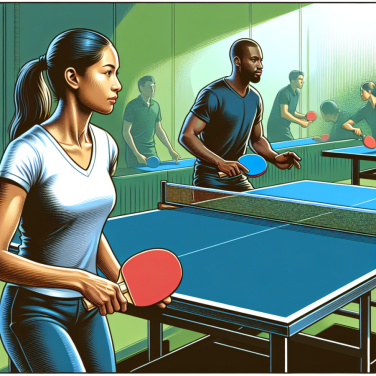Common Missteps in Your Golf Swing that Push the Ball Right
Golfers, irrespective of their skill levels, often struggle with shots that push right, and it's crucial to know that it's primarily due to several common missteps in the swing. Understanding your swing mechanism can aid in identifying the flaws and applying the proper corrections.
The first common misstep is the alignment. Misaligned setups can often push the ball to the right. This usually happens when the body, including feet, hips, and shoulders, is aligned to the left of the target. The incorrect alignment often results in a swing path that is too much 'in-to-out,' leading the clubface to be open relative to the swing path at impact. It is vital to ensure correct alignment parallel to your target line to keep your swing on track.
The second misstep is the grip. An erroneous grip is one of the main reasons why your golf ball may be going right. If your grip is too weak, i.e., your hands are too much on top of the club, it might lead to an open clubface at impact, pushing the ball to the right. Therefore, practicing a properly positioned grip is crucial for your swing to connect efficiently.
Body rotation is another aspect that impacts your swing. When the body does not rotate enough through impact, it causes the clubface to remain open, sending the ball to the right. Many golfers make the mistake of not rotating their hips enough through the downswing, also known as ‘hip slide.’ This lack of rotation prevents the clubface from squaring up at impact.
Over-the-top or casting swing motion is yet another common mishap in a golf swing. This scenario occurs when your leading arm separates from your body during the downswing. The club then cuts across the ball on an outside-to-inside path, predominantly resulting in a slice or a drive going straight right.
A common misinterpretation among many golfers is that the clubface should aim at the target at the top of the backswing. In reality, this position opens your clubface and consequently pushes shots to the right. The correct position at the top of the backswing is when your clubface is parallel to your left forearm for right-handed golfers.
The timing of the release also plays a crucial role in determining the direction in which your ball goes. If your hands release too late in your swing (also known as a late release), your clubface will likely still be open, causing the ball to go right.
Read also:
Understanding the Essentials: How Many Golf Clubs in a Set?
How to Correctly Adjust Your Grip and Stance to Avoid Hooking the Ball Right
Understanding why your golf ball tends to go right is important if you want to improve your golf game. This can often be due to incorrect grip and stance. Therefore, knowing how to adjust these aspects of your swing can help you prevent hooking the ball right.
A hook shot results in the golf ball curving aggressively in the air from right to left (or vice versa for left-handed golfers). Considering how detrimental a hook shot can be for your performance, adjusting your grip and stance to correct this is crucial.
Starting with your grip, adopting a neutral grip can reduce the chances of hooking the golf ball. A neutral grip means that the 'V' formed by your thumb and forefinger points towards your right shoulder, for right handed players. Avoid the strong grip that involves turning your hand to the right because it may close the clubface more and intensify the hook.
Another good method is the interlocking grip, where the pointer finger of the left hand and the pinky of the right hand interlock or mesh. This grip encourages the hands to work together and helps prevent the right hand from overtaking the swing, which minimizes hooks.
In terms of your stance, one of the most common reasons for hooking the ball right is the stance being closed to the target, which encourages an in-to-out swing path. To correct this, set your body so that it's parallel to your target line, with your feet, knees, hips and shoulders all square. Align your feet such that they're slightly left of the target to promote a swing path that's in line with the target.
Including an inside-out swing in your practice routine is another helpful way to prevent hooking the ball right. This technique involves swinging the clubhead from inside the target line to outside during impact which can help in reducing the chances of a hook.
Moreover, you should also pay attention to your hip rotation. Proper hip rotation during a swing helps maintain clubface alignment. Ensure a complete hip turn during the backswing and a full follow through afterwards, maintaining balance throughout.
Lastly, always remember to keep a consistent rhythm and tempo all the way from your backswing to your downswing. Rushing your swing can lead to off-center hits, causing the ball to hook right. Practice helps perfect timing and consistency.
In conclusion, understanding your swing mechanics and working on correcting them, specifically your grip and stance, will massively help in eliminating the ball hooking right.




